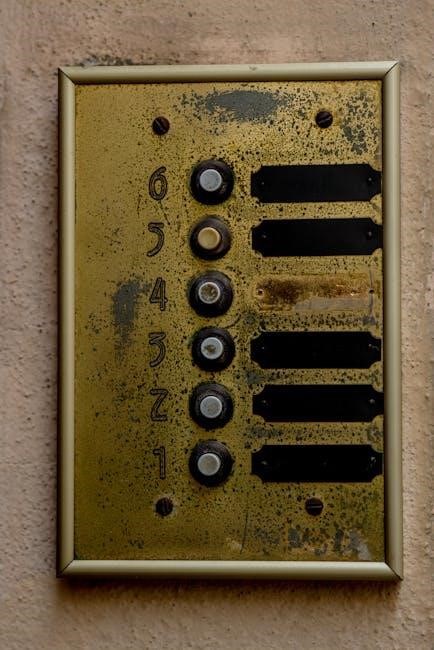Pocket Door Installation: A Comprehensive Guide

Embark on your pocket door journey with this comprehensive guide, designed to walk you through each step, from initial preparations to the final finishing touches. Achieve a seamless and functional pocket door installation with ease.
Pre-Installation Preparations
Before diving into the installation process, meticulous pre-installation preparations are paramount for a successful outcome. Begin by thoroughly reviewing all manufacturer’s instructions included with your pocket door frame kit. Ensure you have a complete understanding of the required steps and components. Gather all necessary tools, including a level, measuring tape, screwdrivers (both Phillips and flathead), a hammer, shims, and safety glasses.
Carefully inspect the pocket door frame and door for any damages incurred during shipping. Verify the door size matches the specified rough opening dimensions. Clear the work area of any obstructions and protect the surrounding floor with drop cloths. Familiarize yourself with local building codes and regulations to ensure compliance throughout the installation process. Proper preparation will save time and minimize potential issues during installation.
Measuring and Framing the Opening
Accurate measurements and proper framing are crucial for a smoothly operating pocket door. Begin by measuring the height and width of the existing rough opening. The rough opening should be slightly larger than the door’s dimensions to allow for the frame and shimming. Consult the manufacturer’s specifications for the precise rough opening size required for your specific pocket door model.
If framing a new opening, construct it using straight, sturdy lumber. Ensure the opening is square, with perfectly vertical studs and a level header. The header must be strong enough to support the weight above the opening. Double-check all measurements and framing dimensions before proceeding. A correctly framed opening is essential for the pocket door to slide smoothly and securely within the wall cavity. Pay close attention to detail during this stage.
Checking for Level and Plumb
Before installing the pocket door frame, meticulously check the rough opening for level and plumb. Use a level to ensure the header is perfectly horizontal. Any deviation from level will cause the door to slide unevenly or bind within the pocket.
Similarly, verify that the studs are plumb using a level held vertically against their faces. Adjust the studs as needed to achieve perfect vertical alignment. Use shims to correct any imperfections and ensure a true and square opening. A plumb and level opening is crucial for the pocket door frame to sit correctly and function optimally. Ignoring this step can lead to operational issues and premature wear.
Take your time and make necessary adjustments for smooth operation.

Assembling the Pocket Door Frame
Constructing the pocket door frame is crucial for a smooth sliding door. This section guides you through assembling the frame, ensuring a sturdy and well-aligned structure for your pocket door system.
Installing the Header
Begin the pocket door frame assembly by carefully installing the header. Position the header within the prepared opening, ensuring it rests securely. If working with a rough opening, align the header flush with the frame’s end. For openings with finished floors, account for the floor’s height to maintain proper door clearance.
Secure the header using appropriate fasteners, referencing provided guides for screw or nail placement. Ensure the header is level and properly supported, as it bears the weight of the door and track system. Accurate header installation is vital for smooth door operation and structural integrity.
Double-check all measurements and alignments before proceeding to the next step. A precisely installed header is the foundation for a successful pocket door setup.
Attaching the Split Studs
With the header securely in place, the next crucial step involves attaching the split studs to the header and the floor. These studs form the pocket within the wall, providing the necessary framework for the door to slide into. Carefully align the split studs vertically, ensuring they are plumb and parallel to each other.
Use appropriate fasteners, such as screws, to securely attach the split studs to the header. Ensure the screws are driven in straight and flush to prevent any obstruction to the door’s movement. At the bottom, secure the split studs to the floor using steel floor clips;
Double-check the alignment of the split studs to ensure they are perfectly vertical and parallel. Any deviation can affect the door’s smooth operation. Verify all measurements and adjustments before proceeding to the next step of the installation.
Securing the Frame to the Opening
With the header and split studs assembled, it’s time to securely fasten the entire pocket door frame into the prepared opening. This step is critical for ensuring the stability and proper functioning of the door. Carefully position the frame within the opening, making sure it is centered and aligned with the wall.
Use shims to fine-tune the frame’s position, ensuring it is perfectly level and plumb. Insert shims between the frame and the wall studs as needed, adjusting until the frame sits squarely within the opening. Once the frame is properly aligned, use screws to secure it to the surrounding wall studs.
Drive the screws through the frame and into the studs, ensuring a solid and robust connection. Regularly check the frame’s level and plumb as you tighten the screws to prevent any shifting. This securing process is crucial for longevity.

Installing the Door Hardware
The next phase involves installing the essential hardware that will enable smooth operation. This includes attaching mounting brackets, inserting rollers, and finally, hanging the door within the pocket frame.
Attaching Mounting Brackets to the Door
Securely attaching the mounting brackets to your pocket door is a critical step ensuring the door hangs properly and operates smoothly. Begin by carefully measuring and marking the locations for the brackets on the top edge of the door, referencing the manufacturer’s specifications for precise placement. Use a level to guarantee the marks are aligned horizontally, which prevents uneven hanging.
Predrill pilot holes at each marked location to prevent splitting the wood, especially if working with solid wood doors. Select screws of appropriate length and gauge to securely fasten the brackets without protruding through the door’s surface. Confirm that the brackets are firmly attached and aligned before proceeding to the next step. Tighten all screws.
Inserting Rollers into the Track
With the mounting brackets secured to the door, the next crucial step involves inserting the rollers into the track. Carefully lift the door and align the rollers with the track opening. Ensure the rollers are oriented correctly, typically with the wheel facing downward to make contact with the track surface. Gently guide each roller into the track, ensuring they seat properly without forcing them.
Once all rollers are in place, double-check their alignment and smooth movement within the track. Any resistance or misalignment at this stage can lead to operational issues later on. If necessary, adjust the position of the rollers slightly to achieve a frictionless glide. This meticulous attention to detail ensures smooth and reliable pocket door operation. Verify easy movement.
Hanging the Door
Now that the rollers are properly inserted into the track, the next step is carefully hanging the door within the pocket. With assistance, lift the door and align the mounting brackets with the rollers already situated within the track. Gently lower the door, ensuring that the rollers engage securely with the brackets. Take care to distribute the door’s weight evenly to prevent any strain on the rollers or the track.
Once the door is hanging, double-check its vertical alignment and smooth operation within the pocket. Minor adjustments may be needed to achieve a perfectly plumb and gliding movement. Ensure the door hangs freely and does not bind or rub against the frame. Confirm secure roller engagement for proper functionality and safety.

Adjusting and Finishing
Fine-tune your pocket door for optimal performance. This involves carefully adjusting door height, alignment, and installing door guides. Finish with drywall and final touches for a polished look and smooth operation.
Adjusting Door Height and Alignment
Once the pocket door is hung, meticulous adjustment of height and alignment is crucial for smooth operation. Begin by loosening the mounting bracket screws slightly, allowing for minor vertical adjustments. Use a level to ensure the door hangs perfectly plumb within the opening. Fine-tune the height by adjusting the rollers, typically accessible through the top of the door.
Check for consistent gaps along the door’s edges; adjust accordingly to prevent rubbing or binding against the frame. Misalignment can lead to operational issues and premature wear. Secure all screws tightly once optimal alignment is achieved, ensuring the door glides effortlessly and closes flush with the jamb. Re-check the level and alignment after tightening to confirm accuracy. This careful attention to detail will contribute significantly to the door’s longevity and functionality.
Installing Door Guides
Proper installation of door guides is essential to ensure the pocket door moves smoothly and remains aligned within the pocket. Begin by identifying the appropriate location for the guides, typically on the floor or wall, depending on the chosen guide type. For floor-mounted guides, position them to engage with a groove or slot on the bottom edge of the door. Secure the floor guide using screws, ensuring it’s firmly attached to the subfloor.
Wall-mounted guides, often nylon or plastic, should be positioned to gently guide the door as it slides, preventing it from rubbing against the frame. Ensure the guides are aligned vertically and horizontally to avoid binding. For bypass or double pocket doors, dual floor guides may be required. Precision in placement guarantees the door operates quietly and without unnecessary friction, extending its lifespan and maintaining its aesthetic appeal.
Drywall Installation and Finishing Touches
Once the pocket door frame is securely installed and the door glides smoothly, proceed with drywall installation. Carefully measure and cut the drywall to fit snugly around the frame, ensuring minimal gaps. Secure the drywall to the studs using screws designed for drywall, spacing them evenly for a firm hold. Pay close attention to the edges around the pocket opening, creating a smooth transition for the door to slide into.
After the drywall is installed, apply joint compound to the seams and screw holes, feathering it out for a seamless finish. Sand the dried compound smooth, repeating the process as needed until a flawless surface is achieved. Finally, prime and paint the drywall to match the surrounding walls, completing the pocket door installation with professional finishing touches. This attention to detail ensures a cohesive and aesthetically pleasing result.
